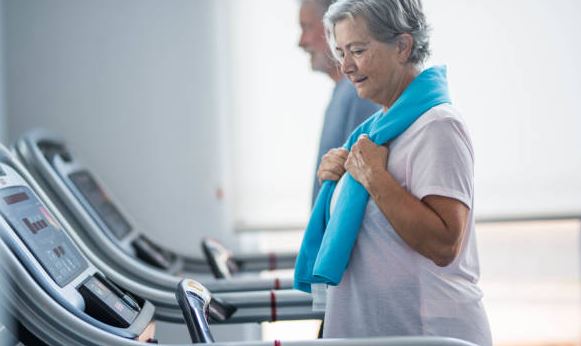Welcome to our blog post discussing an exciting initiative that aims to provide low income gym membership to individuals. In a world where financial constraints often limit access to fitness facilities, this proposed solution seeks to bridge the gap and promote health and wellness for all. Join us as we explore the benefits of this program, how it addresses the problem, who stands to benefit most from it, and potential drawbacks. Let’s dive in and discover how free gym memberships can positively impact low-income individuals!
What Are The Benefits?
Regarding the benefits of free gym memberships for low-income individuals, numerous positive outcomes can be achieved. First and foremost, access to a gym facility provides an opportunity for physical fitness and exercise. Regular exercise has been proven to improve overall health, increase energy levels, and reduce the risk of chronic diseases such as obesity, diabetes, and heart disease.

In addition to the physical benefits, joining a gym offers social advantages. Gyms often serve as community hubs where people from different walks of life come together to better themselves physically and mentally. This sense of belonging can combat feelings of isolation or loneliness that disproportionately affect low-income individuals.
Moreover, gyms typically offer various amenities such as group classes, personal training sessions, and state-of-the-art equipment. These resources help individuals learn proper workout techniques and develop personalized fitness plans tailored to their needs and goals.
Furthermore, regular exercise has been linked to improved mental well-being by reducing stress levels and boosting mood-enhancing endorphins in the brain. For low-income individuals who may face additional financial or emotional stressors, having access to a gym environment can provide them with an outlet for relaxation and rejuvenation.
Last but notable is the potential career impact that access to free gym memberships can have on low-income individuals. Many jobs require employees to maintain good physical health or possess specific fitness standards. By providing free membership opportunities for those who cannot afford it otherwise, this initiative opens doors for employment prospects they might not have had before.
The benefits of offering free gym memberships extend beyond just physical fitness – they encompass mental wellness support networks within communities while helping break down barriers between socioeconomic backgrounds through shared experiences toward healthier lifestyles!
How Does This Proposed Solution Address The Problem?
The issue of limited access to fitness facilities for low-income individuals is a significant barrier to achieving optimal health and well-being. However, offering free gym memberships to lower-income people could help bridge this gap.
By providing free gym memberships for low-income individuals, we offer them an opportunity to improve their physical fitness and overall health. Regular exercise has been proven to reduce the risk of chronic diseases such as obesity, diabetes, and heart disease. It also boosts mental well-being by reducing stress and improving mood.
Additionally, having access to a gym can provide a supportive environment where individuals can receive guidance from trained professionals who can help them develop personalized workout plans based on their goals and abilities. This support system can be invaluable in helping people stay motivated and committed to their fitness journey.
Moreover, gyms often offer various amenities such as group classes, personal training sessions, and specialized equipment that may not be available elsewhere. These resources can empower individuals with limited financial means to explore new forms of exercise they may have previously been unable to try.
However, it’s essential to acknowledge that there may be drawbacks associated with providing free gym memberships for low-income individuals. One potential concern is the strain it may place on existing resources within gyms if demand exceeds capacity. There is also the possibility that some people might take advantage of the program without genuinely committing to utilizing the services offered.
Despite these potential challenges, implementing free gym memberships for low-income individuals would benefit those needing affordable fitness options. It would enable them to overcome financial barriers while gaining access to essential exercise equipment and educational opportunities related to nutrition or wellness programs often provided by gyms.
Ultimately, this proposal aims at leveling the playing field regarding healthy lifestyle choices by ensuring everyone has equal opportunities regardless of income level – because good health should never be a privilege reserved only for those who can afford it.
What Are The Benefits Of This Solution?
Improved Physical Health: Free gym memberships to low-income individuals can benefit their physical health. Regular exercise has been proven to reduce the risk of chronic diseases such as heart disease, diabetes, and obesity. By having access to a gym, individuals can engage in various exercises like cardiovascular workouts, weight training, and group fitness classes that can help them improve their overall fitness level.

Enhanced Mental Well-being: Exercise is beneficial for physical health and plays a significant role in improving mental well-being. Regular physical activity releases endorphins, known as “feel-good” hormones, that can boost mood and reduce symptoms of depression and anxiety. Access to a gym environment allows low-income individuals to engage in activities that promote stress relief and relaxation.
Increased Social Support: One often overlooked benefit of free gym memberships is the opportunity for social interaction. Joining a gym creates opportunities for low-income individuals to connect with others with similar goals or interests. This sense of community fosters social support networks where members can motivate each other, share experiences, and provide encouragement on their fitness journey.
Improved Self-esteem and Confidence: Regular exercise promotes positive body image by helping individuals achieve their fitness goals. Free gym membership offers an avenue for self-improvement for low-income individuals struggling with self-esteem issues due to limited resources or societal pressures. As they begin seeing progress in their strength or physique, it boosts confidence levels significantly.
Long-term Cost Savings: While providing free gym memberships may seem costly initially, it can actually lead to long-term cost savings. By promoting healthier lifestyles through regular exercise at gyms rather than relying on expensive medical treatments later on due to preventable illnesses like cardiovascular diseases or diabetes management expenses – there are potentially significant financial savings both individually and collectively.
Empowerment Through Education: Many gyms offer educational programs and workshops to their members, providing resources on nutrition, fitness training
What Are The Drawbacks Of This Solution?
While providing free gym memberships to low-income individuals may seem like a great solution, several drawbacks must be considered. One of the main concerns is the financial burden it could place on gyms and fitness centers. Offering free memberships means they must cover all costs associated with equipment maintenance, staff salaries, and utility bills.
Another drawback is the potential overcrowding in gyms. If many low-income individuals suddenly take advantage of these free memberships, it could lead to limited access to equipment and facilities for everyone else, including paying members. This could result in frustration and dissatisfaction among existing members who may feel their needs are not being met.
Additionally, there is also the issue of sustainability. Providing ongoing free gym memberships requires a long-term commitment from government agencies and private businesses. It’s crucial to ensure that funding remains available year after year to continue offering this service without interruption.
Moreover, some might argue that offering free gym memberships could discourage personal responsibility and self-motivation among low-income individuals. By providing everything for free, there might be less incentive for people to participate or make an effort in their fitness journey actively.
There is also the risk of misuse or abuse by specific individuals who take advantage of the system without truly benefiting from it or appreciating its value. This can undermine the effectiveness and fairness of such initiatives.
While providing free gym memberships for low-income individuals has its merits in promoting health equity, it’s essential to weigh these drawbacks carefully before implementing such solutions on a larger scale.
Who Would Be Most Helped By This Solution?
Low-income individuals and families would be the primary beneficiaries of free gym memberships. Many people living on a limited income struggle to afford the high costs of joining a fitness center or gym. This solution aims to remove financial barriers and provide access to resources that promote physical health and well-being by offering free memberships to those in need.
For low-income individuals, having access to a gym can make a significant difference in their lives. Regular exercise has been proven to have numerous benefits for both physical and mental health. It can help reduce the risk of chronic diseases such as obesity, diabetes, and heart disease. Additionally, exercise can improve mood, reduce stress levels, and enhance overall quality of life.
Furthermore, providing free gym memberships specifically for low-income individuals acknowledges the disproportionate impact that lack of resources can have on marginalized communities. This solution recognizes that everyone should have equal opportunities to improve their health through fitness activities.
By removing financial barriers and making gyms more accessible for low-income individuals, this solution seeks to empower them with tools they may not otherwise have had access to. In turn, this could reduce health disparities among different socioeconomic groups.
Offering free gym memberships for low-income individuals is designed to their specific needs – ensuring equal opportunities for all when leading healthy lifestyles regardless of income level.
Who Would Be Most Hurt By This Solution?
While offering free gym memberships to low-income individuals is a noble idea, some potential drawbacks must be considered. One group that this solution may negatively impact is the existing paying gym members. If their membership fees increase or if they have to share equipment and facilities with a more significant number of people, it could lead to overcrowding and inconvenience.

Another group that may be adversely affected are smaller privately-owned gyms or fitness centers. These businesses rely on revenue from membership fees to stay operational, and providing free memberships could potentially cut their profits. This could lead to financial difficulties for these establishments and even force some of them out of business.
There is also the concern that offering free gym memberships without any income verification process may attract individuals who do not indeed qualify as low-income. This could result in limited resources being taken up by those who don’t necessarily need them, leaving fewer opportunities available for those who genuinely require assistance.
While the intention behind providing free gym memberships for low-income individuals is admirable, it’s essential to consider all potential negative consequences before implementing such a program.
Conclusion
Offering free gym memberships for low-income individuals can be a game-changer in promoting health and wellness among disadvantaged communities. By removing financial barriers, this proposed solution allows those who may not have had access to fitness facilities before to prioritize their well-being. The benefits of this solution are numerous. Physical activity has been proven to improve overall health, reduce the risk of chronic diseases, and boost mental well-being. By providing free gym memberships, low-income individuals can take advantage of state-of-the-art equipment, personalized training sessions, and group classes that cater to various fitness levels. However, it is important to consider the potential drawbacks as well. The cost of implementing such a program could be substantial and may require collaboration between government organizations or private entities. Additionally, there might be concerns about overcrowding at gyms due to increased demand from low-income individuals.
